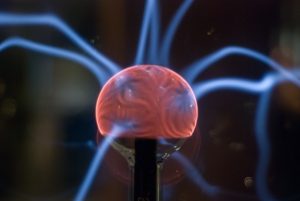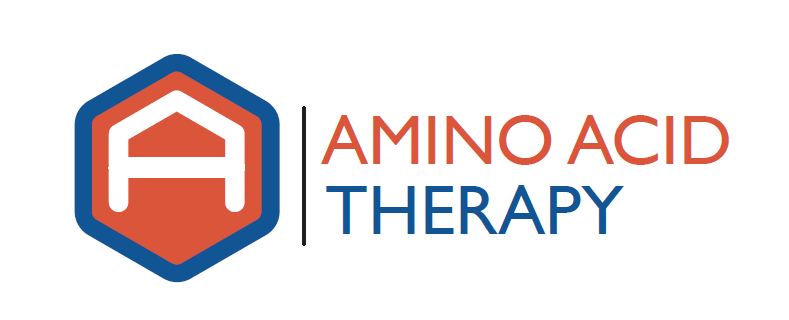by aatadmin | Jan 31, 2018 | Amino Acid Therapy, dopamine dominance, Parkinson's Disease, restless legs
 For those clients that are found to be dopamine dominant, including everyone that has restless leg syndrome (RLS) and Parkinson’s disease (PD), we often recommend that they avoid foods rich in the amino acid tyramine while taking L-dopa/mucuna pruriens and/or large amounts of L-tyrosine. This is because that in some people, this combination can cause an abrupt increase in blood pressure. (more…)
For those clients that are found to be dopamine dominant, including everyone that has restless leg syndrome (RLS) and Parkinson’s disease (PD), we often recommend that they avoid foods rich in the amino acid tyramine while taking L-dopa/mucuna pruriens and/or large amounts of L-tyrosine. This is because that in some people, this combination can cause an abrupt increase in blood pressure. (more…)
by aatadmin | Jan 3, 2018 | Amino Acid Therapy, dopamine dominance, Symptoms of Neurotransmitter Imbalance
 A person undertaking amino acid therapy will have periodic urine testing completed in order to determine if/how to adjust their amino acid dosing in order to optimize neurotransmitter function. Along the way, they may get a lab value for dopamine (or serotonin) that is much higher than is expected. This is often referred to as a “dopamine fluctuation”. We have provided a two part series discussing the dopamine fluctuation in more detail; here I wanted to provide a brief overview of what a dopamine fluctuation is and why it’s important to find and correct them as soon as possible. (more…)
A person undertaking amino acid therapy will have periodic urine testing completed in order to determine if/how to adjust their amino acid dosing in order to optimize neurotransmitter function. Along the way, they may get a lab value for dopamine (or serotonin) that is much higher than is expected. This is often referred to as a “dopamine fluctuation”. We have provided a two part series discussing the dopamine fluctuation in more detail; here I wanted to provide a brief overview of what a dopamine fluctuation is and why it’s important to find and correct them as soon as possible. (more…)
by aatadmin | Dec 6, 2017 | Amino Acid Therapy, dopamine dominance, Neurotransmitters, Parkinson's Disease
 We get requests everyday from people looking for a practitioner in their area that uses amino acid therapy. The best place to start is to contact NeuroResearch at www.neurosupport.com and ask them if there is anyone near you that has taken a training with Marty Hinz, MD in your area; they have the most complete list of providers in the country and should be able to find someone you can contact. (more…)
We get requests everyday from people looking for a practitioner in their area that uses amino acid therapy. The best place to start is to contact NeuroResearch at www.neurosupport.com and ask them if there is anyone near you that has taken a training with Marty Hinz, MD in your area; they have the most complete list of providers in the country and should be able to find someone you can contact. (more…)
by aatadmin | Nov 22, 2017 | Amino Acid Therapy, dopamine dominance, Neurotransmitters, Symptoms of Neurotransmitter Imbalance
 Amino acid therapy involves the determination and administration of the amino acids and cofactors needed to optimize neurotransmitter function. In the vast majority of cases, this involves trying to optimize the function of the “centrally acting monoamines” which include serotonin, dopamine, norepinephrine and epinephrine. The centrally acting monoamines are synthesized from nutrients, including L-tryptophan, 5-HTP, L-tyrosine and L-dopa. These centrally acting monoamines form a system in which serotonin and the catecholamines (which include dopamine, norepinephrine and epinephrine) oppose one another; in other words, optimizing the function of the centrally acting monoamines involves more than just giving ‘more’ of one precursor or the other; it also involves getting the balance right between them. (more…)
Amino acid therapy involves the determination and administration of the amino acids and cofactors needed to optimize neurotransmitter function. In the vast majority of cases, this involves trying to optimize the function of the “centrally acting monoamines” which include serotonin, dopamine, norepinephrine and epinephrine. The centrally acting monoamines are synthesized from nutrients, including L-tryptophan, 5-HTP, L-tyrosine and L-dopa. These centrally acting monoamines form a system in which serotonin and the catecholamines (which include dopamine, norepinephrine and epinephrine) oppose one another; in other words, optimizing the function of the centrally acting monoamines involves more than just giving ‘more’ of one precursor or the other; it also involves getting the balance right between them. (more…)
by aatadmin | Nov 8, 2017 | Amino Acid Therapy, dopamine dominance, Parkinson's Disease
 We have now seen over one hundred clients that had previously been working with other providers for guidance using amino acid therapy. Many of these clients had previous DBS testing completed to help them determine how to optimize their neurotransmitter function. Unfortunately, they did not follow the correct preparation procedure to complete the test and got erroneous results, which then led to erroneous recommendations from their health care providers and sub-optimal resolution of their symptoms. (more…)
We have now seen over one hundred clients that had previously been working with other providers for guidance using amino acid therapy. Many of these clients had previous DBS testing completed to help them determine how to optimize their neurotransmitter function. Unfortunately, they did not follow the correct preparation procedure to complete the test and got erroneous results, which then led to erroneous recommendations from their health care providers and sub-optimal resolution of their symptoms. (more…)
by aatadmin | Oct 11, 2017 | Amino Acid Therapy, dopamine dominance, Parkinson's Disease
 Once it has been determined that a person is dopamine dominant (via the successful completion of a dopamine challenge), the next step in optimizing neurotransmitter function is determining the amount of L-dopa needed (from standardized mucuna pruriens) to maximize symptom control. In order to do that, periodic adjustments are made to the mucuna dosing followed by a pill stop. Successfully completing a pill stop can provide valuable information on how to proceed; unfortunately, many people do pill stops incorrectly, which delays the optimization of their neurotransmitter function and symptom relief. (more…)
Once it has been determined that a person is dopamine dominant (via the successful completion of a dopamine challenge), the next step in optimizing neurotransmitter function is determining the amount of L-dopa needed (from standardized mucuna pruriens) to maximize symptom control. In order to do that, periodic adjustments are made to the mucuna dosing followed by a pill stop. Successfully completing a pill stop can provide valuable information on how to proceed; unfortunately, many people do pill stops incorrectly, which delays the optimization of their neurotransmitter function and symptom relief. (more…)
 For those clients that are found to be dopamine dominant, including everyone that has restless leg syndrome (RLS) and Parkinson’s disease (PD), we often recommend that they avoid foods rich in the amino acid tyramine while taking L-dopa/mucuna pruriens and/or large amounts of L-tyrosine. This is because that in some people, this combination can cause an abrupt increase in blood pressure. (more…)
For those clients that are found to be dopamine dominant, including everyone that has restless leg syndrome (RLS) and Parkinson’s disease (PD), we often recommend that they avoid foods rich in the amino acid tyramine while taking L-dopa/mucuna pruriens and/or large amounts of L-tyrosine. This is because that in some people, this combination can cause an abrupt increase in blood pressure. (more…)
 A person undertaking amino acid therapy will have periodic urine testing completed in order to determine if/how to adjust their amino acid dosing in order to optimize neurotransmitter function. Along the way, they may get a lab value for dopamine (or serotonin) that is much higher than is expected. This is often referred to as a “dopamine fluctuation”. We have provided a
A person undertaking amino acid therapy will have periodic urine testing completed in order to determine if/how to adjust their amino acid dosing in order to optimize neurotransmitter function. Along the way, they may get a lab value for dopamine (or serotonin) that is much higher than is expected. This is often referred to as a “dopamine fluctuation”. We have provided a  We get requests everyday from people looking for a practitioner in their area that uses amino acid therapy. The best place to start is to contact NeuroResearch at
We get requests everyday from people looking for a practitioner in their area that uses amino acid therapy. The best place to start is to contact NeuroResearch at  Amino acid therapy involves the determination and administration of the amino acids and cofactors needed to optimize neurotransmitter function. In the vast majority of cases, this involves trying to optimize the function of the “centrally acting monoamines” which include serotonin, dopamine, norepinephrine and epinephrine. The centrally acting monoamines are synthesized from nutrients, including
Amino acid therapy involves the determination and administration of the amino acids and cofactors needed to optimize neurotransmitter function. In the vast majority of cases, this involves trying to optimize the function of the “centrally acting monoamines” which include serotonin, dopamine, norepinephrine and epinephrine. The centrally acting monoamines are synthesized from nutrients, including  We have now seen over one hundred clients that had previously been working with other providers for guidance using amino acid therapy. Many of these clients had previous DBS testing completed to help them determine how to optimize their neurotransmitter function. Unfortunately, they did not follow the correct preparation procedure to complete the test and got erroneous results, which then led to erroneous recommendations from their health care providers and sub-optimal resolution of their symptoms.
We have now seen over one hundred clients that had previously been working with other providers for guidance using amino acid therapy. Many of these clients had previous DBS testing completed to help them determine how to optimize their neurotransmitter function. Unfortunately, they did not follow the correct preparation procedure to complete the test and got erroneous results, which then led to erroneous recommendations from their health care providers and sub-optimal resolution of their symptoms.  Once it has been determined that a person is
Once it has been determined that a person is 